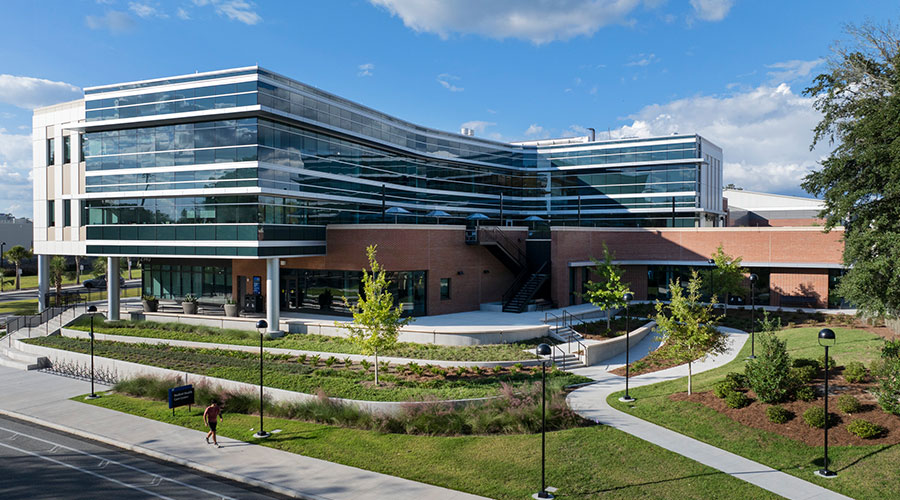 The Teck Acute Care Centre at BC Children’s Hospital, which opened in 2017 in British Columbia, maintains a three-day supply of potable water for all hospital functions in the event an emergency cuts off municipal water.Ed White Photography, courtesy ZGF Architects
The Teck Acute Care Centre at BC Children’s Hospital, which opened in 2017 in British Columbia, maintains a three-day supply of potable water for all hospital functions in the event an emergency cuts off municipal water.Ed White Photography, courtesy ZGF ArchitectsGood Stormwater Management: Key Component of Water Resilience
Making sure facilities have a solid stormwater management plan keeps pollutants out of the water supply, ensuring water resilience for the whole community.
Stormwater management is a critical component of water resilience. The water that runs off of a facility’s roof and washes across all the impermeable parking lots and sidewalks on a campus, picking up pollutants along the way, will have an impact downstream of the facility. The impact could be direct local flooding. It could be overtaxed sewer infrastructure, which then dumps raw sewage into the local source of fresh water. That stormwater effluent could be the trigger for an algae bloom that poisons the water.
Taking steps to catch and slow down stormwater on site, through strategies such as vegetative roofing, bioswales and detention ponds, rainwater capture for irrigation, and reverse wells can all help water percolate slowly back into the water table, keep pollutants out of the water supply, and help your neighbors avoid flooding. “It’s important to understand the full water cycle in a community,” says Josh Prigge, CEO, sustainability consulting firm Sustridge. “Where’s that water coming from, where’s it going, and how can we maximize its use?”
Email comments to naomi.millan@tradepress.com.
Related Topics:















